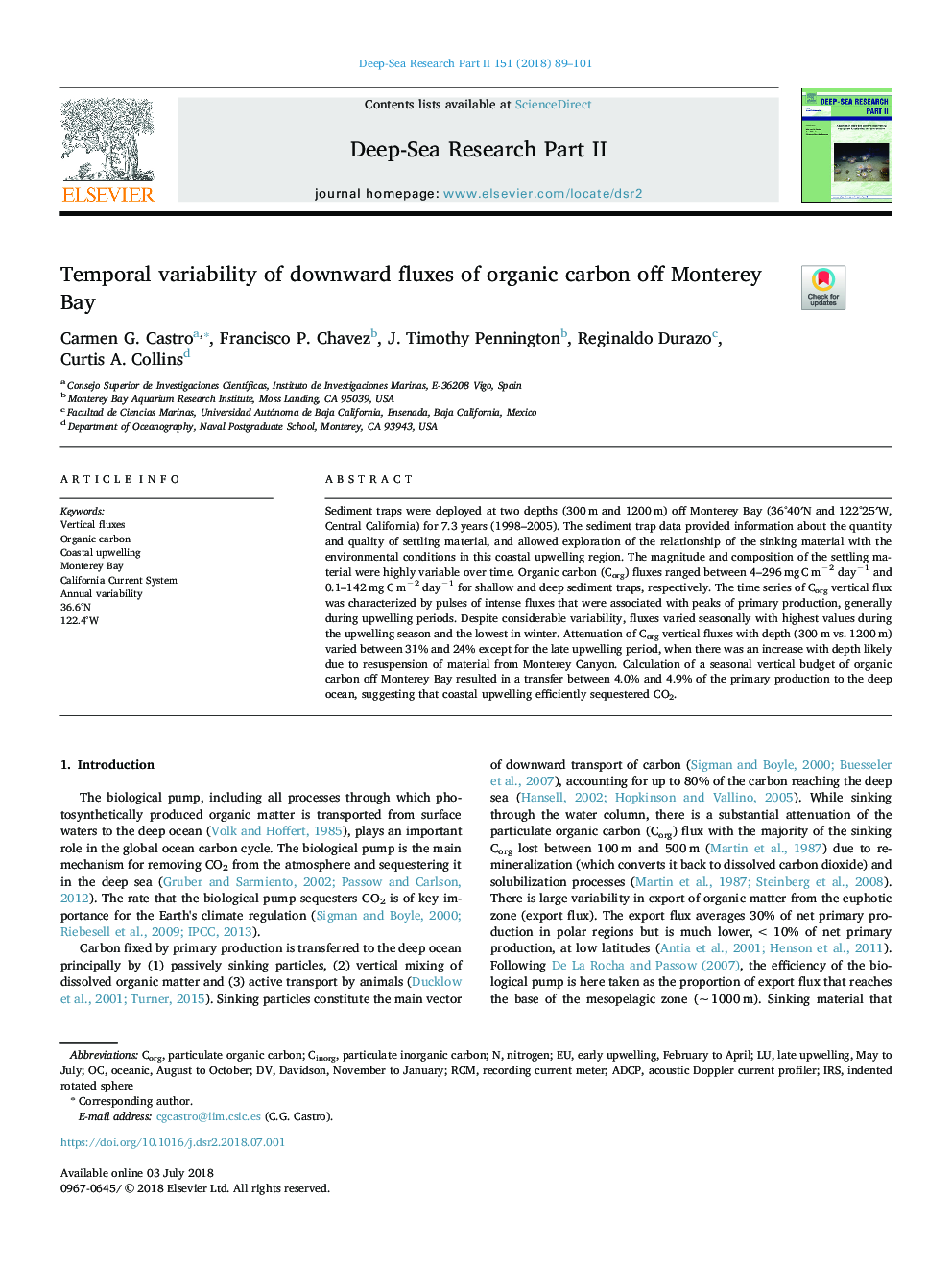| Article ID | Journal | Published Year | Pages | File Type |
|---|---|---|---|---|
| 8966072 | Deep Sea Research Part II: Topical Studies in Oceanography | 2018 | 13 Pages |
Abstract
Sediment traps were deployed at two depths (300â¯m and 1200â¯m) off Monterey Bay (36°40â²N and 122°25â²W, Central California) for 7.3 years (1998-2005). The sediment trap data provided information about the quantity and quality of settling material, and allowed exploration of the relationship of the sinking material with the environmental conditions in this coastal upwelling region. The magnitude and composition of the settling material were highly variable over time. Organic carbon (Corg) fluxes ranged between 4-296â¯mgâ¯Câ¯mâ2 dayâ1 and 0.1-142â¯mgâ¯Câ¯mâ2 dayâ1 for shallow and deep sediment traps, respectively. The time series of Corg vertical flux was characterized by pulses of intense fluxes that were associated with peaks of primary production, generally during upwelling periods. Despite considerable variability, fluxes varied seasonally with highest values during the upwelling season and the lowest in winter. Attenuation of Corg vertical fluxes with depth (300â¯m vs. 1200â¯m) varied between 31% and 24% except for the late upwelling period, when there was an increase with depth likely due to resuspension of material from Monterey Canyon. Calculation of a seasonal vertical budget of organic carbon off Monterey Bay resulted in a transfer between 4.0% and 4.9% of the primary production to the deep ocean, suggesting that coastal upwelling efficiently sequestered CO2.
Keywords
Related Topics
Physical Sciences and Engineering
Earth and Planetary Sciences
Geology
Authors
Carmen G. Castro, Francisco P. Chavez, J. Timothy Pennington, Reginaldo Durazo, Curtis A. Collins,
